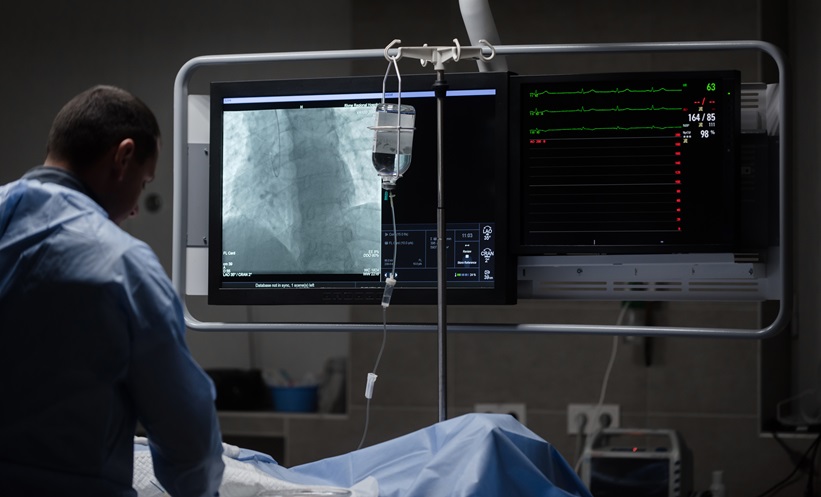FRACTIONAL flow reserve (FFR)-guided percutaneous coronary intervention (PCI) significantly reduced major adverse cardiac and cerebrovascular events at 12 months compared to angiography-guided PCI in patients with intermediate coronary artery disease (CAD) undergoing transcatheter aortic valve implantation (TAVI). This finding comes from the FAITAVI randomised trial, recently presented at EuroPCR 2025 in Paris, France.
The management of patients with both severe aortic stenosis and intermediate CAD who are candidates for TAVI is a persistent clinical challenge, with previous studies providing conflicting evidence on the best approach. As CAD is present in over half of TAVI candidates, determining whether to intervene on bystander coronary lesions and how to do so safely and effectively is of major importance. The FAITAVI trial was designed to address whether a physiology-based approach using fractional flow reserve (FFR) to guide PCI could improve outcomes compared to the traditional strategy of angiography-guided PCI, which relies solely on the visual assessment of coronary narrowing.
In this multicentre, randomised trial, 320 patients with severe symptomatic aortic stenosis and intermediate CAD were enrolled and assigned equally to either FFR-guided PCI or angiography-guided PCI. In the angiography-guided arm, all coronary lesions with ≥50% narrowing in vessels larger than 2.5 mm were treated. In the FFR-guided arm, only lesions with an FFR ≤0.80 were treated, while those with FFR >0.85 were deferred; for FFR values between 0.81 and 0.85, reassessment after TAVI was recommended due to possible changes in coronary flow. The primary endpoint was the rate of major adverse cardiac and cerebrovascular events (MACCE) at 12 months, including all-cause death, myocardial infarction, ischaemia-driven revascularisation, disabling stroke, or major bleeding. The mean age of participants was 86 years, and both groups had similarly low SYNTAX scores (median 7). At 12 months, MACCE occurred in 8.5% (14/165) of the FFR-guided group versus 16.0% (25/155) in the angiography-guided group, a reduction primarily driven by lower rates of all-cause death and ischaemia-driven revascularisation in the FFR-guided arm.
These results highlight the benefit of a physiology-guided approach for managing coronary lesions in TAVI candidates with intermediate CAD, suggesting that FFR-guided PCI can safely reduce unnecessary interventions and improve patient outcomes. For clinical practice, this supports a shift towards routine use of FFR to guide revascularisation decisions in this population, rather than relying solely on angiographic appearance. Future research should assess this strategy in broader and more diverse patient groups and explore its impact compared to conservative management. Clinicians should consider integrating functional assessment into their standard workflow when evaluating TAVI candidates with concomitant CAD.
Reference
Ribichini FL et al. Angiography versus physiology-guided PCI in patients undergoing TAVI: the functional assessment in TAVI (FAITAVI) trial. EuroPCR 2025, 20-23 May, 2025.








